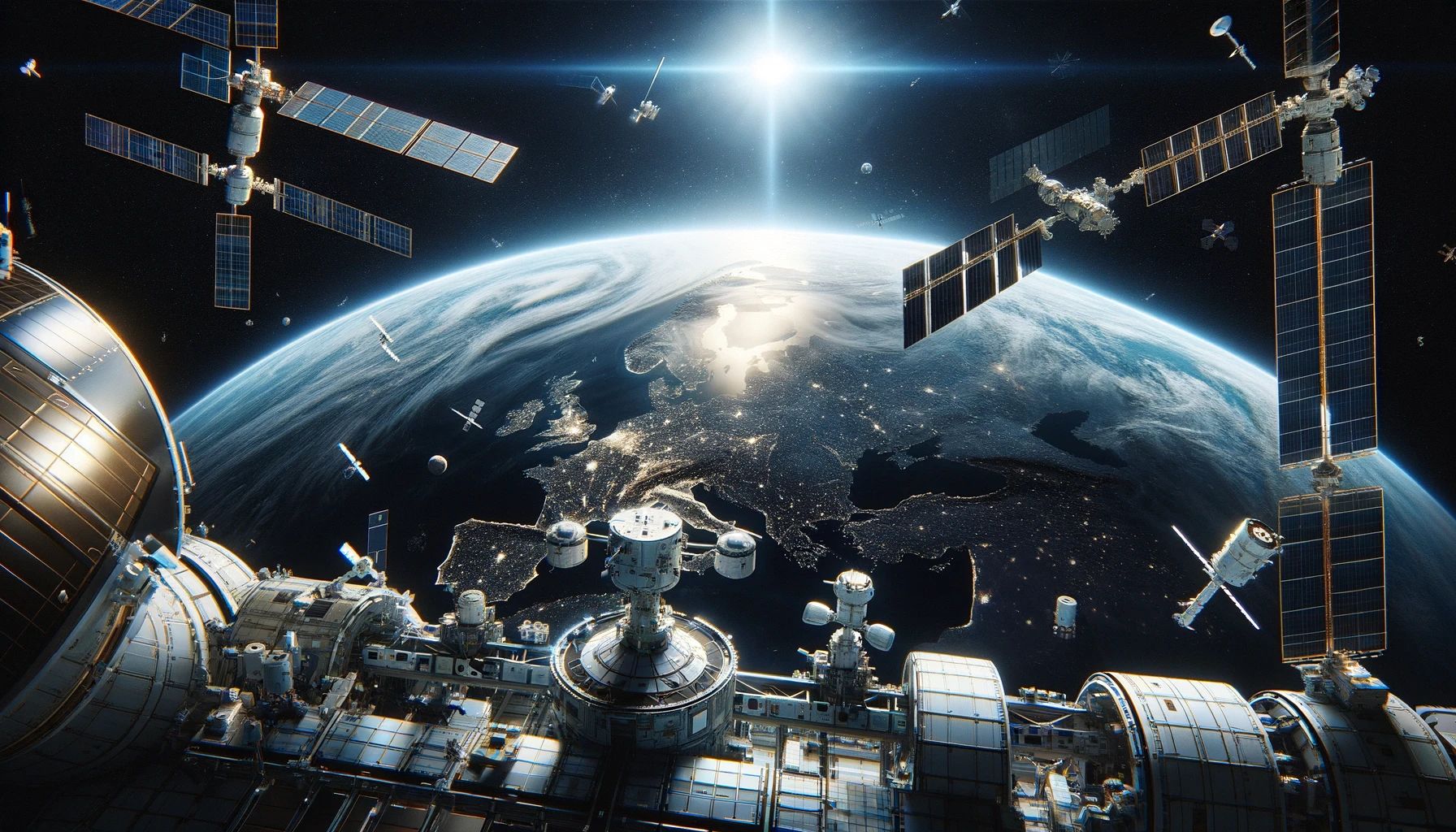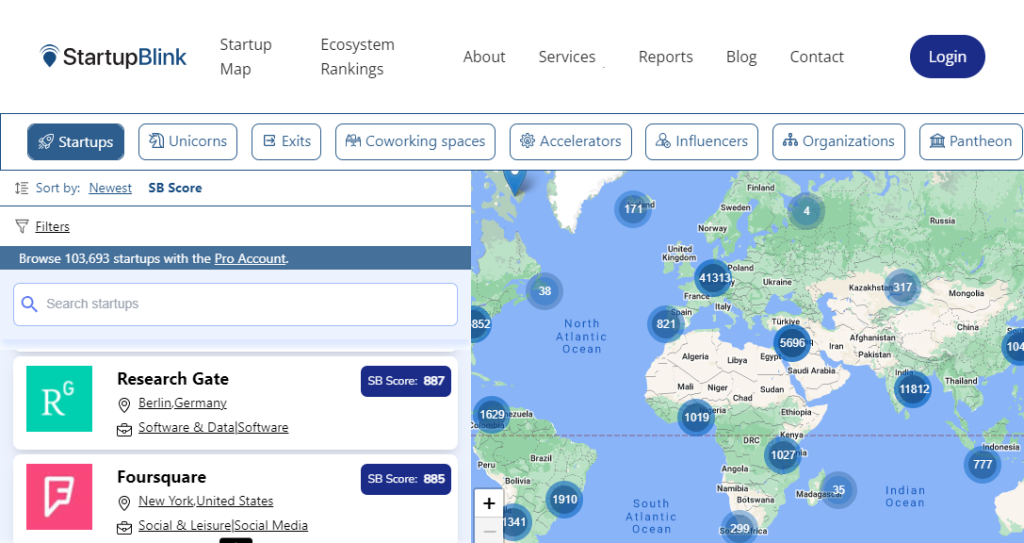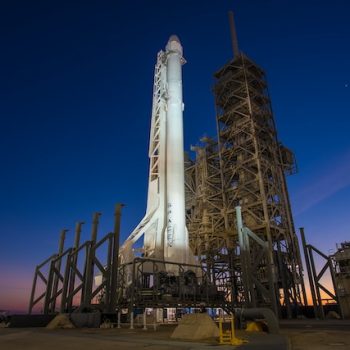In recent years, the space industry has experienced significant growth. Valued at approximately US$ 423.8 billion in 2019, the global space innovation economy increased to around US$ 447 billion by 2023 and is expected to reach US$ 1 trillion by the year 2030, based on the data from Statista and McKinsey. In this article, we will explore the current trends in the aerospace industry, revealing the major advancements and shifts happening recently.
Additionally, detailed information about the industry can be found in our upcoming “Global Aerospace Index.” As we have started the preparations for this new Index, ranking cities and countries excelling in the industry, we’re looking forward to extending our map with more Aerospace entities like startups, accelerators, and organizations. You can add your organization to the map and can further explore startups, unicorns, and exits across 1,000+ locations and 12 industries.
Current Trends in the Aerospace Industry
1. Reusable Launch Systems
The advancement of reusable launch systems (RLS) stands as a groundbreaking development in space exploration and industry, heralding a new era of efficiency, sustainability, and accessibility. This innovative approach challenges the traditional, single-use model of rocketry, offering a transformative solution with far-reaching implications. In this section, we explore the benefits of RLS, emphasizing their role in revolutionizing space travel by making it more cost-effective, environmentally friendly, and accessible to a broader range of stakeholders.
Reusable Launch Systems (RLS) are poised to transform the aerospace industry, driven by three core benefits:
- Cost Reduction: Eliminate the “build-and-throw-away” model of traditional rockets, slashing launch costs and opening doors to exciting possibilities like frequent smallsat launches, affordable space tourism, and cost-effective scientific missions.
- Increased Launch Frequency: Faster turnaround times compared to building new rockets mean more frequent launches, enabling rapid constellation deployments, quicker responses to space needs, and accelerated advancement of space-based technologies.
- Environmental Sustainability: Unlike debris-generating Expendable Launch Systems, RLS significantly reduces space pollution and fuel consumption, ensuring a cleaner future for space exploration and responsible resource development.
Pioneered by companies like SpaceX, RLS has achieved a major milestone with the partially reusable Falcon 9 rocket which has flown multiple times, significantly reducing launch costs for satellites and cargo missions. The industry is growing rapidly. Starship, SpaceX’s fully reusable rocket, aims to ferry humans and cargo to Mars and beyond, however it is yet to make its official launch. The size of the reusable launch vehicle market worldwide was US$ 1.61 billion in 2022. It’s expected to increase from US$ 1.94 billion in 2023 to US$ 5.41 billion by 2030 according to Fortune Business Insights. For 2023, North America held the largest share (around 40%), followed by Europe and Asia Pacific.
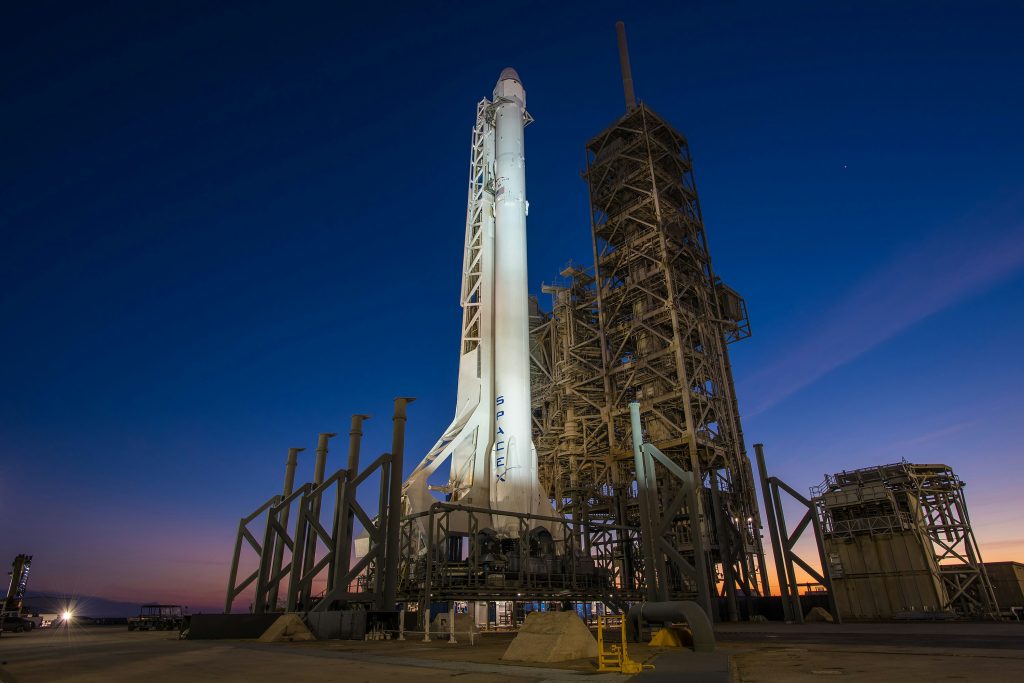
2. Space Tourism Development
The development of space tourism represents a huge potential for the commercialization of the aerospace industry. The Precedence Research Report projects that the global space tourism market, valued at US$ 869.20 million in 2022, is expected to exceed US$ 3,884.18 million by 2032. This represents a compounded annual growth rate (CAGR) of 16.20% from 2023 to 2032. This growth is contributed by private companies including SpaceX, Blue Origin and Virgin Galactic. Some milestones that initiated the growth of Space Tourism includes:
- The development of reusable rockets cut down the cost of going to space.
- The emergence of private space companies has increased competition, reduced barriers to entry, and lowered costs
An important reason behind Space tourism’s growth is NASA and others are making it easier to visit and do research at the International Space Station for citizens.
There are some big challenges, like the cost, safety, and the environment. But as technology gets better and more people are interested, the legal and regulatory bodies are working to create new rules to fulfill these new trends.
3. Emergence of Private Companies
In 2015, there were around 10 private space companies in Japan, and that number jumped to over 70 by 2023 according to data from Innovative Space Carrier Inc. Global venture capital funding for space startups reached US$ 16.8 billion in 2021, a 44% increase from 2020 according to Space Capital. Private companies are an important part of space exploration, speeding up technology in space, creating new rules, and opening up the space market globally.
Some of the best-known achievements of private companies:
- SpaceX: Pioneered reusable rockets, leading to significant cost reductions and frequent launches.
- Blue Origin: Developing reusable launch systems and suborbital space tourism vehicles.
- Virgin Galactic: Launched suborbital tourism flights in 2023.
- Rocket Lab: Provides dedicated small satellite launches and is developing reusable orbital vehicles.
- OneWeb: Deploying a large constellation of internet-providing satellites.
The contributions of private sector companies have led to a greater collaboration between the public and private sectors in space exploration and utilization, exemplified by initiatives like the International Space Station (ISS) National Laboratory. This model of public-private partnership harnesses the strengths of both sectors, combining public oversight and investment with private sector efficiency, agility, and creativity. For example, the ISS National Lab has democratized access to the unique microgravity research environment of space, inviting entrepreneurs and innovators to explore new possibilities and potentially spawn entirely new markets. Moreover, private companies, taking on significant investment in in-orbit research and development, have pioneered the advancement of space research facilities, thereby mitigating financial and operational risks for the public sector.
In short, private companies getting into space has led to quicker tech advancements, more investment in space projects, and has made the space sector competitive worldwide.

4. Space Mining Initiatives
Space mining refers to the process of exploring, extracting, and using natural resources located on celestial entities like the Moon, other planets, and asteroids. This activity encompasses the harvesting of natural resources such as minerals, gasses, metals, and water. The primary objectives of space mining include supporting human sustenance in space environments and facilitating the continued exploration of the cosmos.
Public and private companies are increasingly drawn to space mining due to several factors. Firstly, asteroid mining offers access to scarce resources like rare earth metals, crucial for advanced technologies but limited in availability on Earth. This not only addresses resource scarcity but also opens up unprecedented opportunities for the space industry. By providing raw materials necessary for constructing space infrastructure—such as space stations and spacecraft—space mining supports the industry’s expansion and the broader agenda of space exploration.
Additionally, harvesting resources from celestial bodies presents an attractive alternative to depleting Earth’s finite resources, aligning with sustainable practices and reducing environmental impact. Furthermore, the economic prospects of space mining are significant, promising to usher in a new industrial sector, drive revenue, and create employment opportunities, thereby contributing to economic development.
The current initiatives in space mining include:
- Planetary Resources: Aims to mine near-Earth asteroids for water and precious metals, focusing on in-situ resource utilization (ISRU) for space exploration.
- Deep Space Industries: Develops robotic asteroid prospecting and mining technologies.
- iSpace: Focused on lunar water ice extraction and utilization for in-space propulsion.
- AstroForge: Plans to extract metals from near-Earth asteroids using space-based 3D printing.
- Lunar Outpost: Aims to develop lunar infrastructure and extract lunar resources like regolith and water ice.
The space mining industry is in its early stages, but the initiatives above show its potential to grow in the future with projections estimating its value to reach US$ 1 trillion by 2040. Space mining initiatives have collectively raised over US$ 500 million in funding by 2023 and have achieved significant milestones, such as successful asteroid mining simulations (Space News, 2022).
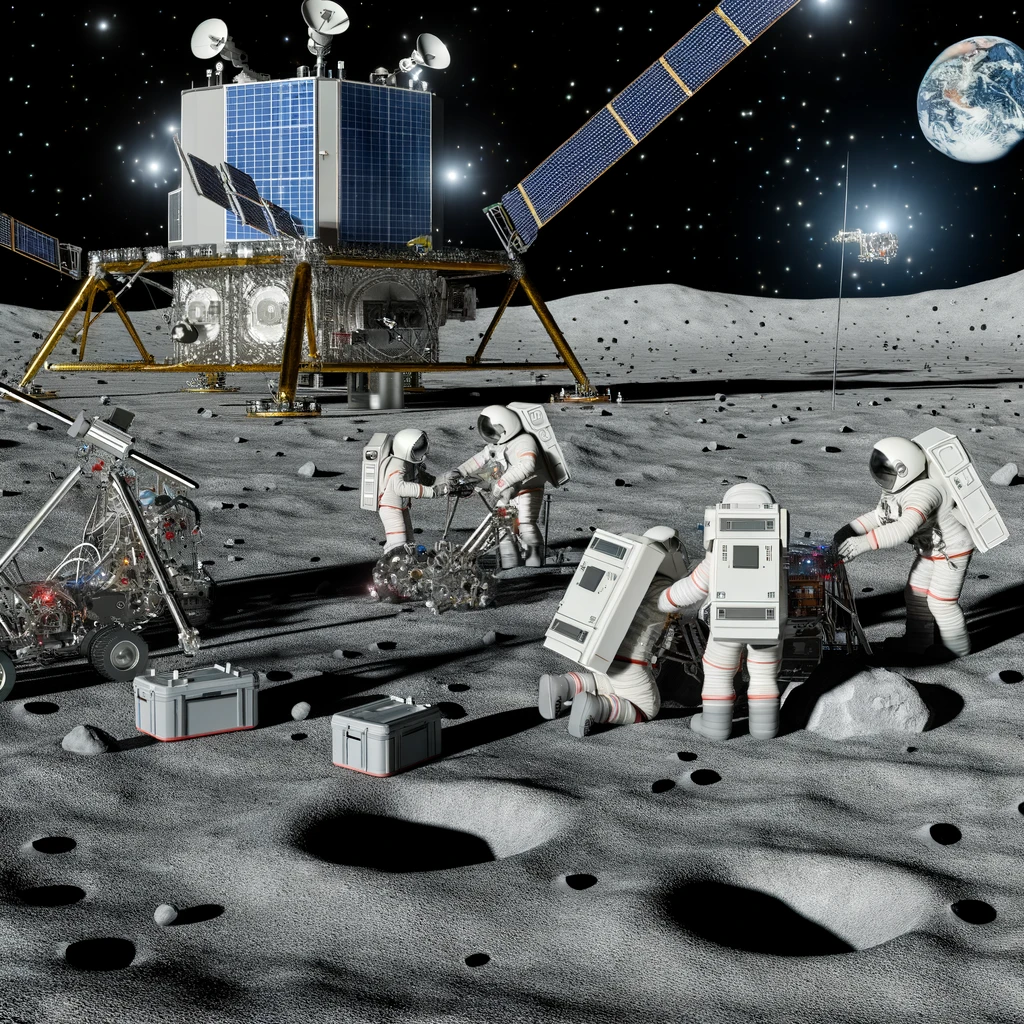
In conclusion, the current trends in the aerospace industry are centered around sustainable exploration, commercialization, and unprecedented growth potential. Its trajectory is not just about reaching new heights but about leveraging the vastness of space for technological, economic, and scientific advancements that benefit humanity as a whole. As we continue to push the boundaries of what’s possible, the space industry’s current trends are set to redefine our place in the universe and open up a galaxy of possibilities.
